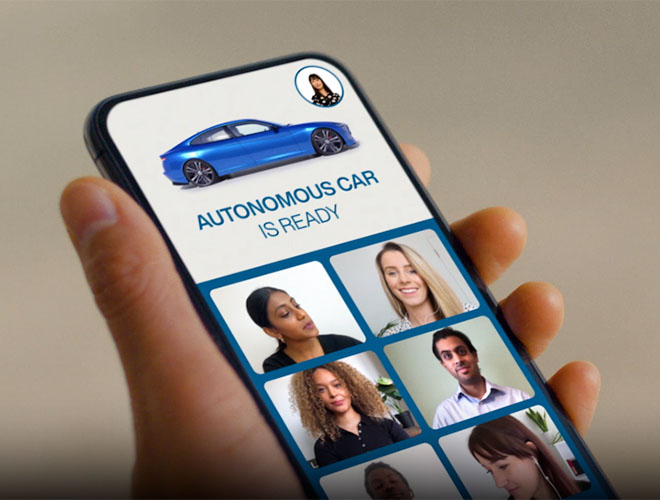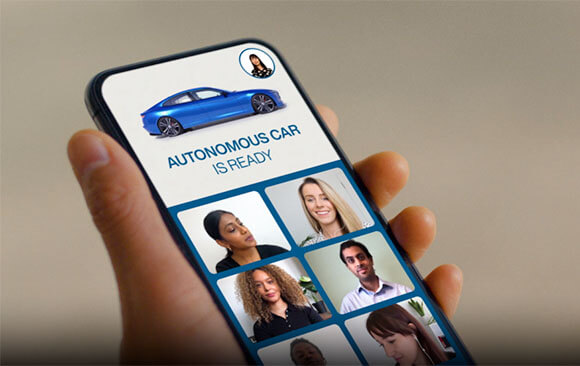Imagine having a twin, who not only looks exactly like you, but can predict your every move and help you make better decisions. Now, imagine that twin is not a person, but a digital or virtual representation of a physical object or system. Welcome to the world of digital and Virtual Twins, where the power of data and advanced technology is transforming how we design, build, and optimize everything from cars to cities.
A Digital Twin is merely a 3D representation of the physical product whereas a Virtual Twin represents a connected system that is model based and can be simulated and played with. In the context of automotive industry, the virtual twin will continuously learn from the physical product (the car) and vice versa.
So then, what are Commercial Twins? Stay tuned to understand better.
As automobiles are increasingly controlled by software, the end result is no longer solely a physical vehicle or a software application, but rather a distinctive package utilizing both the vehicle and the application to provide a personalized experience. This transition signifies a significant change in where value is created, with substantial repercussions for the worth of digital content.
Previously, content and experiences were viewed as stages in a marketing funnel, ultimately leading to the physical acquisition of a vehicle at the dealership. However, the COVID-19 pandemic in 2020 highlighted a significant shift towards online vehicle purchasing and consumption of vehicle-based mobility.
In today’s world, digital experiences have become the mainstay for buying vehicles, replacing the traditional showroom visit. When was the last time you did not research for the product, read about the user reviews online or on social media before buying the product? The focus has shifted from buying a physical product to buying an experience that meets customer needs.
Therefore, the value of digital content is no longer just about creating demand, but also about delivering on that demand. This has led the automotive industry to adopt a software-defined approach, making digital experiences a key driver for their business.
A Software-Defined Vehicle is any vehicle that manages its operations, adds functionality, and enables new features primarily or entirely through software.
Some of the use cases which are achievable through Software Defined Vehicles are:
- Smart HMI
- Today your car HMI has a generic 3D model of the vehicle.
- Imagine having an accurate representation of your own car in the HMI, with the virtual twin of your car learns and displays the vehicle information accurately to you at any point of time – whether it is your in-vehicle HMI or your mobile app.
- Data collected from sensors, goes back to the OEMs, allowing them to find the patterns and provide you an even better user experience.
- Passenger Welcome Sequence
- A passenger welcome sequence is basically all the steps from the moment your car recognizes you and the moment your powertrain starts.
- OEMs create welcome sequences to differentiate themselves from their competition. More about Welcome Sequence in the later part of the presentation.
- Smart Wipers, Audio Analytics, Smart Battery Management Systems and Connected Charging Grids, Smart Insurance, etc are some of the use cases of SDVs.
A decade back if I had said that such things are possible with your vehicle, people would have called me crazy. But today, with new technologies like 5G, advancement in chips and increased computing power, with alliances and standardization this is possible, and the industry is headed towards this direction.
As digital & software driven vehicle platforms continue to grow, OEMs face the challenge of delivering high-quality 3D data that is consistent across all applications, including websites, in-vehicle HMIs, companion apps, and even the metaverse.

And this is where also the 3DEXPERIENCE platform comes in picture with its Commercial Twin from 3DEXCITE.
A Commercial Twin lives inside the 3DEXPERIENCE platform and is a subset of the larger term, the Virtual Twin.
The Commercial Twin maintains its link between the PDM system, which in our case is ENOVIA, is connected to the CATIA systems engineering models and is created from the Marketing Master which has a simplified structure for visualization, optimized geometry, technical and soft parts, covering materials and marketing attributes like metadata useful for further downstream processes if any.
The marketing master is derived from the Engineering Master (which contains parts, shapes, assembly structures, kinematics and attributes).
The Commercial Twin has animations, technical variability and marketing variability. This commercial twin can then be distributed to downstream applications like Unity/Unreal for virtual production, for distributed rendering, Immersive Review and many more use cases.
With software driven and connected systems on the rise, it will be very interesting and exciting to see how this space evolves in the next 5 years. Interested in the evolution of commercial twins? Stay tuned for further articles on this topic on how commercial twins can fuel marketing and product development backed by industry standards like COVESA.
Meanwhile, let us know your thoughts on the world of virtual and commercial twins by commenting in the comments section below.

